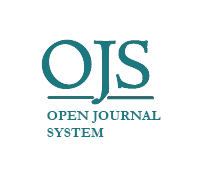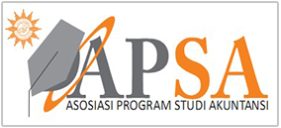Optimalisasi Barang Milik Negara: Penelitian Konsep Capital Charge Dalam Perspektif Peningkatan Efisiensi Penggunaan Aset Pemerintah
DOI:
https://doi.org/10.22219/jrak.v13i3.29934Keywords:
Capital Charge, Management of State Assets, New Public ManagementAbstract
Purpose: This study aims to analyze the possibility of applying the capital charge concept to the mechanism for managing state assets. This study also elaborates on the prerequisites that must be met for the application of the capital charge.
Methodology/approach: This study uses a qualitative approach in the form of a case study conducted at the Directorate General of State Assets Management of the Ministry of Finance Republic of Indonesia. This unit has the authorization to formulate policies in the field of management of state assets. The study was carried out by analyzing literature studies, analyzing data on the management of state assets, and analyzing interview results. The data collection method consists of secondary data for literature analysis and data analysis on the management of state assets. Primary data collection methods were used to analyze interview results. The participants for this study are government officials in the Directorate General of State Assets Management and Directorate General of Treasury Ministry of Finance.
Findings: The study found that the concept of capital charge is relevant for managing state assets, especially to the concept of optimizing state assets management. The optimizing concept focuses on the cost efficiency of underutilized BMN. However, in its implementation, it is necessary to take into account the fiscal impact from the perspective of state financial budgeting in the APBN.
Practical implications: The implementation of capital charges in state assets management is expected to increase the efficiency usage of state assets which is in an underutilized condition.
Originality/value: The study was carried out using the case study method at the unit which has the authority to formulate policies in the field of management of state assets. Previous research in Indonesia was done using another method.
Downloads
References
Australia, G. o. W. (2003). Accrual appropriations and capital user charge: a user manual. Perth: Departement of Treasury and Finance
Carlin, T. M. (2003). Unravelling the capital charging riddle–some empirical evidence from Victoria. Financial Accountability & Management, 19(1), 73-92. https://doi.org/10.1111/1468-0408.00164
Data SBSK DJKN. (2022).
detik finance. (2023). https://finance.detik.com/infrastruktur/d-6987716/sri-mulyani-bongkar-fakta-miris-aset-negara-jadi-gudang-hingga-diserobot
DJKN. (2014). Media kekayaan negara edisi no.16 tahun v/2014. 27-29.
DJKN. (2021). Kajian kebijakan capital charge di Indonesia Jakarta: DJKN
Hanis, M., Trigunarsyah, B., & Susilawati, C. (2010). Elements in public asset management framework for local governments in developing countries. Proceedings of the 2010 International Conference on Construction and Real Estate Management Volume 1, 418-423 https://doi.org/10.13140/2.1.1056.3840
Hanis, M. H. (2021). Kajian pendahuluan atas pengenaan beban pengelolaan di Indonesia. Retrieved 26 Juni 2023, from https://www.djkn.kemenkeu.go.id/kpknl-dumai/baca-artikel/14378/PenerapaN-Capital-Charge-diBerbagai-Negara.html
Heald, D., & Dowdall, A. (1999). Capital charging as a VFM tool in public services. Financial Accountability & Management, 15(3‐4), 209-228. https://doi.org/10.1111/1468-0408.00083
Hood, C. (1991). A public management for all seasons? Public administration, 69(1), 3-19. https://doi.org/10.1111/j.1467-9299.1991.tb00779.x
Kinerja Pengelolaan DJKN. (2022). https://www.djkn.kemenkeu.go.id/?from=menu
Peraturan Menteri Keuangan nomor 118 /PMK.01/2021 tentang organisasi dan tata kerja Kementerian Keuangan, (2021).
Peraturan Menteri Keuangan nomor 172/PMK.06/2020 tentang standar barang dan standar kebutuan barang milik negara, (2020).
Peraturan Menteri Keuangan nomor 181/PMK.06/2016 tentang penatausahaan barang milik negara, (2016).
Peraturan Pemerintah Republik Indonesia nomor 27 tahun 2014 tentang pengelolaan barang milik negara, (2014).
The Resource Management Framework - Addendum. (2019). chrome-extension://oemmndcbldboiebfnladdacbdfmadadm/https://www.dtf.vic.gov.au/sites/default/files/document/RMF%20addendum%20-%20updated%20section%207.1%20Capital%20Assets%20Charge.pdf
Setkab. (2022). https://setkab.go.id/pemantauan-dan-evaluasi-terhadap-pengelolaan-aset-barang-milik-negara-di-lingkungan-pemerintah/
Undang-undang Republik Indonesia nomor 1 tahun 2004 tentang perbendaharaan negara, (2004).
Zealand, D. o. T. N. (2004). Is capital charge a financial instrument or expense? Retrieved 26 Juni 2023, from https://www.treasury.govt.nz/information-and-services/state-sector-leadership/guidance/reporting-financial/accounting-guidance/capital-charge-financial-instrument-or-expense#:~:text=Accordingly%2C%20capital%20charge%20is%20to,entities%20are%20reporting%20to%20Treasury.
Downloads
Published
Issue
Section
License
Copyright (c) 2023 Boris Satriyo Utomo, Dwi Martani

This work is licensed under a Creative Commons Attribution-NonCommercial-ShareAlike 4.0 International License.

Jurnal Reviu Akuntansi dan Keuangan is licensed under a Creative Commons Attribution-NonCommercial-ShareAlike 4.0 International License.
Authors who publish with this journal agree to the following terms:
- Authors retain copyright and grant the journal right of first publication with the work simultaneously licensed under a Creative Commons Attribution-NonCommercial-ShareAlike 4.0 International License that allows others to share the work with an acknowledgement of the work's authorship and initial publication in this journal.
- Authors are able to enter into separate, additional contractual arrangements for the non-exclusive distribution of the journal's published version of the work (e.g., post it to an institutional repository or publish it in a book), with an acknowledgement of its initial publication in this journal.
- Authors are permitted and encouraged to post their work online (e.g., in institutional repositories or on their website) prior to and during the submission process, as it can lead to productive exchanges, as well as earlier and greater citation of published work (See The Effect of Open Access).










